Carbon Dioxide Removal (CDR) ... To Clear the Air, Look Beneath the Waves
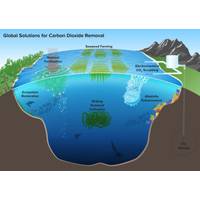
Participants at the 26th United Nations Climate Change Conference (better known as COP26) late last year in Glasgow reiterated humanity needs to accelerate change in the coming decades to limit global warming to 1.5°C (or even to the 2°C as agreed up in the Paris Agreement). Meeting this goal by 2050, the formidable deadline agreed upon across environmental sectors to prevent dooming the planet, will require more than electric cars and veganism. In addition to minimizing emissions at the source…
USA: Twelve Offshore Wind R&D Projects Selected for Funding
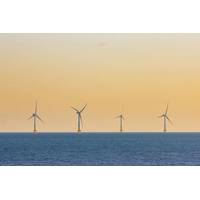
The U.S. National Offshore Wind Research and Development Consortium (NOWRDC) has selected twelve projects for contract negotiation, completing its first solicitation for offshore wind research and development technology projects. The twelve awards totaling $10.3 million will support a variety of research areas, including comprehensive U.S. supply chain analyses, studying the impacts of offshore wind on the electric grid system, and innovations in anchoring structures.The Consortium…
Ørsted, US Unis to Study Whales in OWP
Danish developer Orsted U.S. Offshore Wind has signed a research partnership with Rutgers University, the University of Rhode Island and Woods Hole Oceanographic Institution to support academic research activities related to offshore wind.The group is set to launch the Ecosystem and Passive Acoustic Monitoring (ECO-PAM) project.Ørsted signed an initial memorandum of understanding with Rutgers University in May 2019 to support academic research activities related to offshore wind.
Scientists Uncover Explanation for Hidden Ocean Swell Interactions
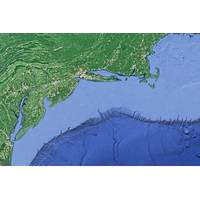
Better simulations of internal tides may benefit sonar communications, protect offshore structures, and more. In certain parts of the ocean, towering, slow-motion rollercoasters called internal tides trundle along for miles, rising and falling for hundreds of feet in the ocean’s interior while making barely a ripple at the surface. These giant, hidden swells are responsible for alternately drawing warm surface waters down to the deep ocean and pulling marine nutrients up from the abyss.
US Awards $20 Mln for Wave and Tidal Energy Projects
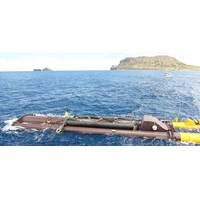
The U.S. Energy Department announced 10 organizations have been selected to receive more than $20 million in funding for new research, development and demonstration projects that advance and monitor marine and hydrokinetic (MHK) energy systems, which generate electricity from ocean waves and tidal currents. These projects will aim to improve the performance of MHK systems and advance environmental monitoring technologies that will help protect wildlife and reduce uncertainty regarding potential environmental impacts.
Woods Hole Celebrates 30th Anniversary
Woods Hole Group, Inc. announces its 30th anniversary on May 16, 2016. Originally incorporated in 1986 as Aubrey Consulting, the company has grown and diversified, while maintaining its focus on applying new technologies and scientific methods to efficiently solve real-world problems. The corporate headquarters remains in Falmouth, Massachusetts, supported by domestic operations in Delaware (Dover), Florida (Jacksonville), and Texas (Houston), along with partners in more than 10 countries to support international operations.
Fukushima Radioactivity Detected at British Columbia Shoreline
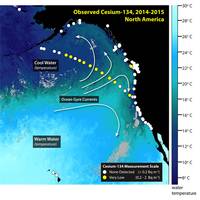
Scientists at the Woods Hole Oceanographic Institution (WHOI) have for the first time detected the presence of small amounts of radioactivity from the 2011 Fukushima Dai-ichi Nuclear Power Plant accident in a seawater sample from the shoreline of North America. The sample, which was collected on February 19 in Ucluelet, British Columbia, with the assistance of the Ucluelet Aquarium, contained trace amounts of cesium (Cs) -134 and -137, well below internationally established levels of concern to humans and marine life.
Research Shows Iron's Long Ocean Journey
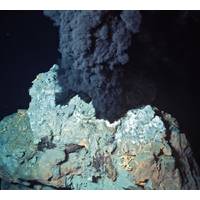
A new study led by scientists at the Woods Hole Oceanographic Institution (WHOI) points to the deep ocean as a major source of dissolved iron in the central Pacific Ocean. Researchers found that iron can travel long distances, highlighting the vital role ocean mixing plays in determining whether deep sources of iron reach the surface-dwelling life that need it to survive. Iron is readily soluble in low oxygen regions at hydrothermal vent sites and along continental margins…
Woods Hole's Profiling System for Helix Energy
Woods Hole Group on November 14, 2014 was awarded a contract to design and install a current profiling system for a subsidiary of Helix Energy Solutions Group Inc. The current profiling system will consist of dual (upward and downward looking) Acoustic Doppler Current Profiling instrumentation (ADCP), a launch and recovery system (LARS), onboard real time displays of the water column speed and direction to 1000 M below the Semi-submersible vessel. The system will be installed on the Semi-submersible well intervention vessel…
DeepWater Buoyancy Chosen for Ocean Observatories Initiative
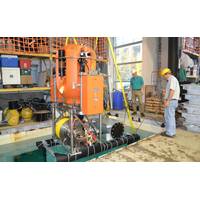
DeepWater Buoyancy has been awarded a major contract to supply flotation to the University of Washington’s Applied Physics Laboratory for the cabled observatory component of the Ocean Observatories Initiative (OOI). The OOI, a project funded by the National Science Foundation (NSF), is planned as an integrated infrastructure of science-driven platforms and sensor systems to measure physical, chemical, geological and biological properties and processes from the seafloor to the air-sea interface.
Upgraded Alvin Sub Passes Scientific Sea Trials
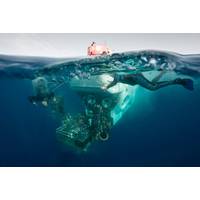
Scientists gave the rebuilt Alvin submarine two thumbs up after field-testing the nation’s only human-occupied deep-sea research vehicle for the first time after a major $42-million overhaul that dramatically upgraded the sub’s capabilities. “We’ve tested the core functions of the new Alvin, and we believe we have a great new tool for the scientific community,” said Harvard University scientist Peter Girguis. He was chief scientist of an expedition that ended March…
Scientists Train Students on Oil Spill Research
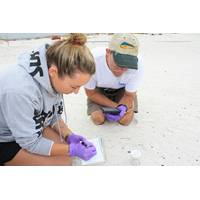
As part of ongoing research nearly four years after the Deepwater Horizon oil spill, scientists from the Woods Hole Oceanographic Institution (WHOI) will team up with a group of high school students in Florida to collect remnants of oil from Gulf Coast beaches this week. Marine chemist Chris Reddy studies how the many compounds that compose petroleum hydrocarbon, or oil, behave and change over time after an oil spill. He and his researchers have collected and analyzed about 1,000 oil samples from the Gulf Coast since the Deepwater Horizon oil spill.
PlanetSolar Continues Scientific Voyage in North Atlantic
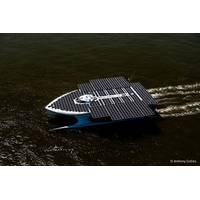
After several days of waiting for favorable weather, the MS Tûranor Planet Solar, the largest solar boat in the world, left the city of Boston, carrying three scientific team members from the University of Geneva (UNIGE), and a researcher from the Woods Hole Oceanographic Institution, the largest center of its kind in the world, with whom UNIGE is collaborating for this expedition. This important stopover in the capital of Massachusetts was crucial in the planning of the “DeepWater” expedition’s itinerary…
PlanetSolar Bound for Boston
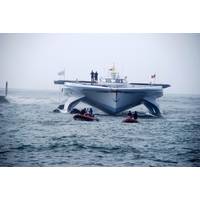
swissnex Boston welcomes "PlanetSolar DeepWater Expedition," June 22-26, 2013. In support of its mission to build stronger relationships between scientists, entrepreneurs and innovators in Massachusetts and Switzerland, swissnex Boston is welcoming the world's largest solar-powered boat to Boston's Fan Pier for its inaugural visit. Together with PlanetSolar and the University of Geneva, swissnex Boston is hosting a series of educational, business and media events about solar technology and climate change…
Ocean Science and Exploration Focus on Capitol Hill
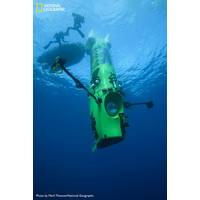
Explorer and director James Cameron will be on Capitol Hill on Tuesday, June 11, with Dr. Susan Avery, president and director of Woods Hole Oceanographic Institution for a series of public events and a Senate hearing. Central to their visit is the display of the Deepsea Challenger, the only human-occupied vehicle currently able to access the deepest parts the ocean. Cameron developed the vehicle over seven years and used it in March 2012 to dive to the deepest spot in the ocean, Challenger Deep in the Mariana Trench.
